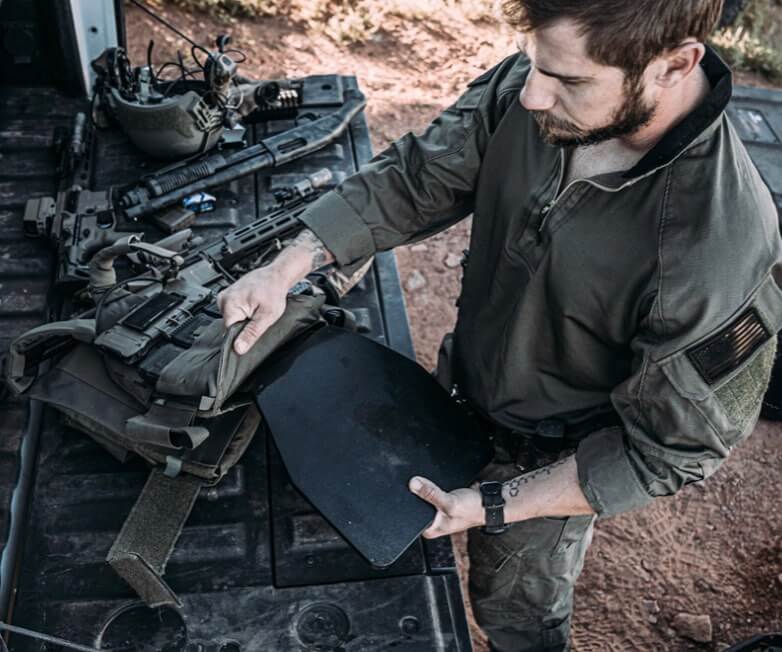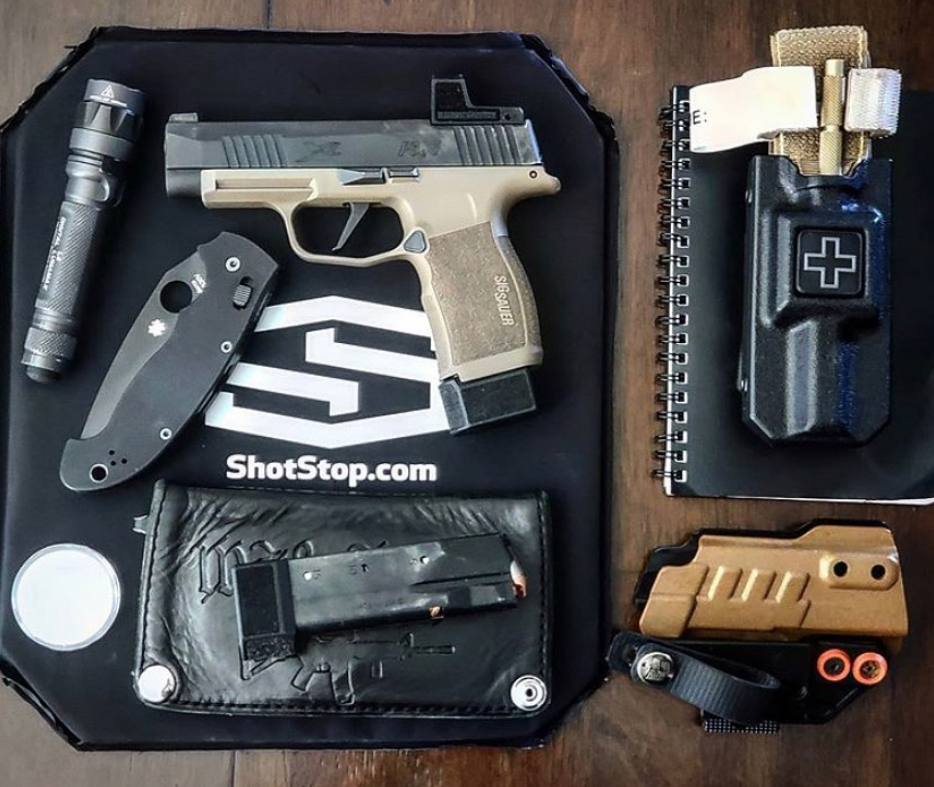There are many misunderstandings out there about “civilian body armor”, or as it might more properly be referred to, armor for citizens. Though it is perfectly legal in most places for someone to buy, own, and wear body armor, legality doesn’t do anything about the weight and restrictive nature of most vests and plates — and of course, the cost. Shotstop, an Ohio-based armor technologies company, says they’ve addressed (if not eliminated) all those drawbacks. And not just when it comes to lightweight body armor, but with regard to their armor plates.

As they put it, “Our patented materials, processes, and designs make real-world ballistics protection solutions far more affordable to a wider market, thus saving many more lives.”
They do this, in part, with what they refer to as Duritium technology. It’s a material they claim makes for the lightest level IV body armor available and appears to be a part of their recent bulletproof backpack inserts and guidance (see more at “Bulletproof Backpacks”).

Here’s how they run it down in their own words.
Body Armor Materials and their Contribution to Weight
The type of material that makes up body armor plays a significant role in how heavy it is. Below is a list of the various materials used to make body armor and how much they typically weigh per sq. ft.
STEEL BODY ARMOR
While steel might be the most common and cheapest type of body armor out there, it definitely isn’t the lightest. In fact, steel body armor is typically the heaviest, weighing in at about 10.2 lbs per sq. ft., which is why body armor is so heavy—if you’re wearing steel plates.
CERAMIC BODY ARMOR
Ceramic body armor is typically much lighter than steel plates, weighing in at about 5-6 lbs. per sq. ft. However, what you lose in weight, you also lose mobility. They’re also a lot more expensive for a product that can typically only stop a few rounds before shattering. So, while ceramic plates are much lighter than steel, given the lengthy period you’re probably wearing them, that weight adds up.

POLYETHYLENE ARMOR
Despite the fact that polyethylene—generally made from a specific kind of polyethylene, called Ultra-High-Molecular-Weight Polyethylene (UHMWPE)—is the most common type of plastic used in the world today, it is not your cheapest body armor option. In fact, it typically costs more than steel or ceramic armor, but the added cost comes with 15 times the abrasion-resistance than carbon steel. Luckily, it is the lightest option, by far, between steel and ceramic, but still not the lightest option on our list.

DURITIUM® ARMOR
Duritium is our patented technology, combining UHMWPE with composite materials for the lightest, thinnest, and most durable body armor—Yes, you read that correctly, lightest body armor.

If you’re interested in learning more about Shotstop, they’re online at shotstop.net. Connect with ’em on Facebook ( /shotstopballistics/ ), follow on Instagram ( @shotstopbodyarmor ), or find them on Linked In.





